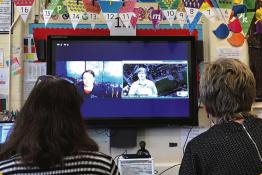The use of Web 2.0 technologies in school science
Issue 330 | Page 113 | Published Sep 2008
Description
Web 2.0 technologies can be defined as Web-based services or products that allow individuals to share digital resources with one another, to engage each other in conversation and to collaborate with one another so that they can collectively construct knowledge. This article discusses the potential uses of Web 2.0 technologies, for example RSS feeds, social bookmarking applications, blogs, podcasts, wikis and immersive virtual environments, to facilitate students' learning of science, especially in the 'long tail' region of science education outside the standard science curriculum.
More from this issue
Science teachers may currently find questions about creationism and intelligent design being raised in science lessons. In 2007 the UK Government...
Writing Science notes for SSR; The ball's up at the end of the lesson: plenary fun with a vinyl football; Pitched roofs and capillary rise;...
As part of the new 'How science works' programme of study for key stage 4 (14-16 year-olds) taught in England and Wales, alternative...



